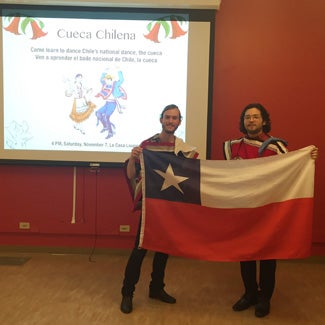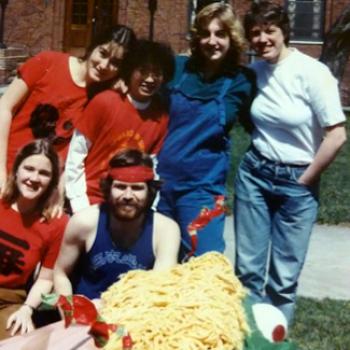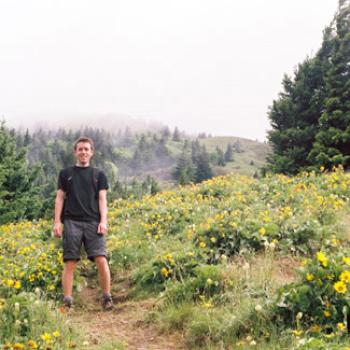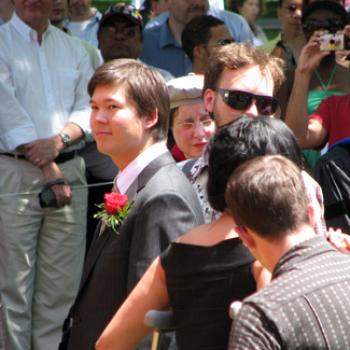On finding community
Nico Lara ’18
“For me, La Casa has been an important touchstone with which to keep in contact with my Latino heritage and language--all too easy to lose sight of in the hustle and bustle of pursuing academics and extracurriculars.”

I arrived to Oberlin in the fall of 2014, fresh from spending a gap year travelling around Chile and getting to know my extended family (although my dad’s family is Chilean, the trip down is so long that I had only been twice before). My year had taught me much, but it also left me full of doubts: what if I was too old to connect with my classmates? What if I had forgotten how to be a student in all the time I took off? These fears were not assuaged in the rush of the first day of orientation; with its accompanying unpacking, scheduled events, and tearful goodbyes to families, I utterly failed to talk to any other students. It did not help that my roommate—a conservatory clarinetist—already had a thriving network of friends developed over years of attending summer music programs.
So it was with not a small amount of trepidation that I approached the mandatory hall meeting for La Casa Hispanica, aka Spanish House, on my first night.
As we went around the circle, introducing ourselves, sharing where we were from and our personal gender pronouns (and having an accompanying discussion on what exactly these are), I began to settle into the group. Several others had taken gap years as well, and pretty much everyone was just as friendless and on-edge as I was. In that moment, I knew I was going to be okay. About halfway through the icebreaker, one of my fellow freshman, a serious looking man who hadn’t said much until then, spoke. He said his name was Eduardo, that he too was from Chile, and had been studying in the capitol, Santiago. I remembered Victor, a clarinetist friend of mine back in Chile, had told me one of his good friends was going to be starting at Oberlin and I wondered how small the world really could be.
After the icebreakers were over, and people began to mill around, I asked Eduardo if he knew Victor—and lo and behold, he did indeed. This was my first breakthrough at Oberlin, the first time I felt a meaningful connection, and I began to look forward to the year as a whole instead of just agonizing over all of the little details.
Although La Casa was formative in creating my most enduring, closest companions at Oberlin, the community I found there goes far beyond just friendships. For me, La Casa has been an important touchstone with which to keep in contact with my Latino heritage and language--all too easy to lose sight of in the hustle and bustle of pursuing academics and extracurriculars. Furthermore, I am proud to be part of the cultural gateway of La Casa, both for Hispanic students wishing to reconnect as I do, and for those who simply wish to learn more about the various cultures within the umbrella of the Spanish language. As an example, through the mandatory project that each resident has to plan and complete, I had a chance to share empanada—a staple of Chilean cuisine—and Chile’s national dance, the cueca, with Oberlin. Finally, La Casa has provided the platform for some of the closest faculty-student relationships I have observed, both through the presence of the Spanish department in a non-academic setting and through the teamwork required to organize the various events that take place within its walls throughout the semester. For instance, because of a connection with Profesora Tovar that initially started through La Casa, I got to spend two weeks mapping the Mexico City underground last winter term.
As a double major in the sciences, and a devoted member of the Pyle Inn co-op, the draw of north campus is too much to resist so I enter my third year, I am moving out of La Casa. Many of my close friends remain, however, and I know that although I no longer am a resident, the community is always there.
Tags:
You may also like

On the Asia House dragon
“It would have been tedious work except that it was ambitious, self-directed, and had nothing to do with classes or credits. What made it something to look forward to was the enjoyment of working...
Bill Heinrich ’81

On attending the Tank pig roast
“Events like this, where wildly different people end up hanging out together, are common at Oberlin.”
Brook Luers ’12

On defining Oberlin
“There are thousands of attributes, numbers and statistics that you could chime off that make Oberlin marginally better or worse than any given institution...what the Princeton Review or the US News...
Jaremy Rich ’07